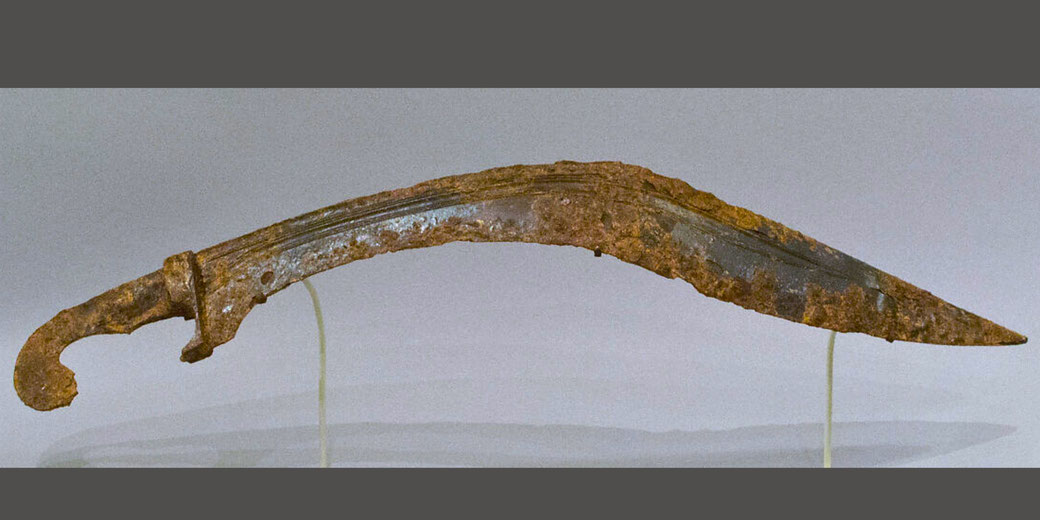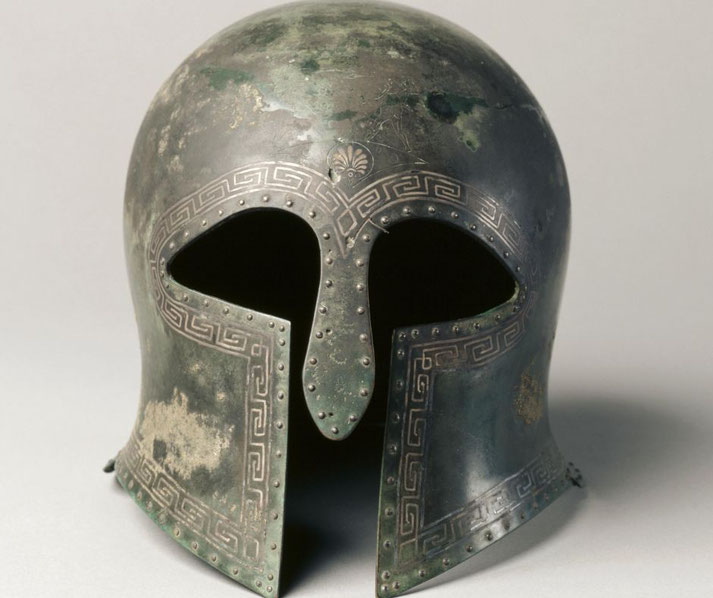The Battle of Leuctra: The dramatic day when Sparta was brutally crushed on the battlefield

Fought in 371 BC near the village of Leuctra in Boeotia, the Battle of Leuctra marked a pivotal turning point in the power dynamics of the Greek city-states.
For centuries, Sparta had been the unchallenged military power in Greece, its warriors revered and feared for their discipline and prowess.
But on the plains of Leuctra, a new force emerged to challenge this dominance.
How Sparta rose to power in Greece
Sparta's geographical location in the southeastern part of the Peloponnese provided natural defenses and isolation that allowed it to develop a unique and independent culture.
Surrounded by mountains and rugged terrain, Sparta was difficult to invade, providing a secure foundation for growth.
This geographical advantage allowed Sparta to focus on internal development and military preparedness without constant threat from neighboring states.
Central to Sparta's rise was the development of a military culture that permeated every aspect of life.
The agoge, a rigorous training program, began at the age of seven for male citizens and instilled values of discipline, endurance, and martial skill.
This lifelong commitment to military excellence created a professional standing army unmatched in ancient Greece.
The Spartans' mastery of hoplite warfare and the phalanx formation became symbols of their military prowess, earning them respect and fear across the Greek world.
Sparta's strategic alliances played a crucial role in its ascent to power. The formation of the Peloponnesian League in the 6th century BC allowed Sparta to extend its influence across the Peloponnese.
Through this alliance, Sparta could project its power, control key territories, and maintain a balance of power that favored its interests.
The League became a tool of Spartan hegemony, binding other city-states to Sparta's military and political leadership.
Sparta's leadership in the Greco-Persian Wars, particularly the decisive victory at the Battle of Plataea in 479 BC, further solidified its reputation as a military power.
Leading a coalition of Greek city-states against the mighty Persian Empire, Sparta demonstrated tactical brilliance and unyielding courage.
The defeat of the Persians marked a turning point in Greek history and elevated Sparta's status as a defender of Greek freedom and autonomy.
Perhaps the most significant event in Sparta's rise to dominance was its victory over Athens in the Peloponnesian War (431-404 BC).
This protracted and devastating conflict pitted two great powers against each other, with Sparta's land-based military might facing off against Athens' naval supremacy.
The war saw numerous battles, sieges, and shifts in fortune, but ultimately, Sparta's resilience, strategy, and alliances led to Athens' surrender.
The defeat of Athens marked the zenith of Spartan power, establishing it as the preeminent city-state in Greece.

What were the causes of the Battle of Leuctra?
The years following the end of the Peloponnesian War in 404 BC saw Sparta's influence expand across Greece, but this dominance was not without its challenges.
The Greek city-states were engaged in a delicate and ever-changing balance of power.
Alliances were formed and dissolved in response to the ever-shifting landscape, and the shadow of Sparta loomed large over the region.
Sparta's control over the Peloponnesian League gave it significant sway, but resentment was brewing among those who felt oppressed or marginalized by Spartan rule.
The seeds of rebellion were being sown, and the winds of change were beginning to stir.
Sparta's military might was unparalleled, and its influence reached far and wide. However, its strict adherence to traditional values and aggressive expansionist policies led to growing dissatisfaction among its allies and subjects.
The once-unquestioned Spartan dominance was starting to show cracks, and the voices of dissent were growing louder.
Thebes, once a reluctant ally of Sparta, began to assert itself as a power to be reckoned with.
Under the guidance of visionary leaders like Epaminondas and Pelopidas, Thebes embarked on a path of military reform and political maneuvering.
The formation of the Sacred Band, an elite fighting force, symbolized Thebes' ambition and readiness to challenge Sparta.
The rise of Thebes was not just a military phenomenon; it was a statement of intent, a declaration of independence from Spartan control.
Leuctra's location made it a strategic point of contention. Control over this region would have significant implications for both Sparta and Thebes, making it a natural battleground for their escalating rivalry.
Overview of the two sides
The Spartan army was renowned for its discipline, training, and effectiveness in battle.
The core of the army consisted of the Spartiates, full citizens who were professional soldiers trained from a young age. Supported by perioikoi (non-citizen free men) and helots (state-owned serfs), the Spartan phalanx was a well-oiled machine, rigid in formation and unyielding in combat.
Led by King Cleombrotus I, a seasoned commander who embodied the Spartan warrior ethos, the Spartans favored a traditional hoplite phalanx, relying on heavy infantry and a strict formation.
Their approach to warfare was methodical, precise, and rooted in centuries of tradition.
The Theban army, though less famed than its Spartan counterpart, was undergoing a transformation. Under the guidance of generals like Epaminondas, Thebes was adopting innovative tactics and formations.
The Sacred Band, an elite force of 300 hoplites, was a symbol of Theban pride and military innovation.
Composed of 150 pairs of warriors, their loyalty and bravery were legendary. The Thebans employed a unique oblique formation, with a strengthened left wing intended to break the Spartan line.
Epaminondas, the Theban general, was a brilliant strategist and tactician whose innovative approach would play a crucial role in the battle.
The leadership on both sides was a study in contrasts. For Sparta, King Cleombrotus I was a symbol of tradition and valor, a seasoned warrior who led from the front.
For Thebes, Epaminondas was a visionary leader, a thinker as much as a warrior, whose innovative tactics would redefine the art of war.
Pelopidas, commander of the Sacred Band, was a charismatic and fearless leader whose elite troops would play a pivotal role in the battle.
What happened on the day of battle
The two armies faced each other on the plains of Leuctra on a hot summer day in 371 BC, each with its unique formation and strategy.
The Spartans, true to their tradition, formed a solid phalanx, with their elite Spartiates on the right wing.
The Thebans, under the innovative guidance of Epaminondas, deployed an unorthodox oblique formation, with a heavily reinforced left wing.
The Spartan formation was a deep and disciplined phalanx, relying on cohesion and brute strength.
In contrast, the Theban formation was a 50-deep left wing, aimed at smashing through the Spartan right, with the rest of the line echeloned back to refuse engagement.
The battle was marked by several key moments and turning points that shaped its outcome.
The Theban charge, led by the Sacred Band, broke the Spartan right wing, causing confusion and disarray.
Despite the initial shock, the Spartans fought fiercely, showcasing their renowned discipline and valor.
However, the death of King Cleombrotus further demoralized the Spartan forces, turning the tide decisively in Thebes' favor.
These moments were not just tactical successes; they were symbolic victories that shattered the myth of Spartan invincibility.
The battle was brutal and costly. The Spartans suffered heavy losses, including 400 of their elite Spartiates.
The Thebans also endured casualties but emerged victorious, their losses overshadowed by the significance of their triumph.
The cost of victory was high, but the rewards were even greater, as Thebes established itself as a major power and ended Spartan dominance.

The consequences of the Spartan defeat
The dust had barely settled on the battlefield of Leuctra when the reverberations of Thebes' stunning victory began to be felt across Greece.
The immediate aftermath of the battle saw a dramatic shift in the fortunes of both Sparta and Thebes.
The surviving Spartan forces, demoralized and defeated, retreated from Boeotia, marking a significant blow to their prestige and influence.
The once-mighty Sparta was humbled, its aura of invincibility shattered. In contrast, the victory at Leuctra propelled Thebes to the forefront of Greek politics, establishing it as a major military and political power.
The Theban triumph was not just a military success; it was a political revolution that challenged the established order and heralded a new era in Greek history.
The loss of so many elite Spartiates weakened Sparta's military and political structure, leading to internal divisions and instability.
The once-unquestioned Spartan dominance began to wane, and the myth of invincibility was replaced by a reality of decline and decay.
The loss of hegemony led to a reassessment of Spartan society, its values, and its place in the Greek world.
The victory at Leuctra marked the beginning of a brief period of Theban hegemony, as it sought to challenge and replace Sparta's influence in Greece.
Thebes embarked on a series of campaigns and diplomatic efforts to consolidate its newfound power, forging alliances and expanding its influence.
What do you need help with?
Download ready-to-use digital learning resources
Copyright © History Skills 2014-2025.
Contact via email
With the exception of links to external sites, some historical sources and extracts from specific publications, all content on this website is copyrighted by History Skills. This content may not be copied, republished or redistributed without written permission from the website creator. Please use the Contact page to obtain relevant permission.





